- How much material will they need to fill the sinkhole?
- How much will it cost to fill the sinkhole in?
- What is a guess that is too low?
- What is a guess that is too high?
- What is your best guess?
- What information do we need to know to figure this out?
One of the sinkhole’s amazing properties is how incredibly cylindrical it is. The other thing I find striking is how deep it appears. It looks like it goes down and never stops. I wouldn’t be surprised if students thought it might go all the way through the Earth and come out on the other side (which apparently is not China but actually in the middle of the Indian Ocean). In actuality it does stop and this video below shows that better.
All the challenges revolve around knowing the sinkhole’s dimensions, however its reported dimensions vary. You can have students discuss the three reported options and debate to find the one that is most reasonable or skip this step and go with CNN article I have included (which I believe has the most accurate dimensions):
- National Geographic: “60 feet (18 meters) wide and about 30 stories deep” (assuming a story is about 10 feet, then about 300 feet deep)
- Time Magazine: “runs some 200 ft. deep”
- CNN: “The 20-meter (about 66 feet) diameter sinkhole is about 30 meters (about 100 feet) deep.”
- Slate: “A sinkhole, 65 feet across and 100 feet deep”
I think it is worth having students reflect on how reasonable these estimates are. Here are some of my thoughts:
- National Geographic, CNN, and Slate seem to agree that the diameter is about 20 meters, so that is what I will assume.
- The depth measurement varies from 100 feet to 200 feet to 300 feet. Obviously that is a huge difference.
- The pictures don’t seem to be helpful in determining the depth.
- Looking at the video, the sinkhole looks to be a little more than 1.5 times deeper than it is wide. So, that seems to match up with the CNN and Slate measurements.
Going forward with dimensions of diameter of 66 feet and depth of 100 feet, we can use the formula for the volume of a cylinder: pi * radius^2 * height. That gives us pi * 33^2 & 100 cubic feet or approximately 342,119.45 cubic feet.
Interestingly, Slate appears to have made a mathematical error in their reporting (below)
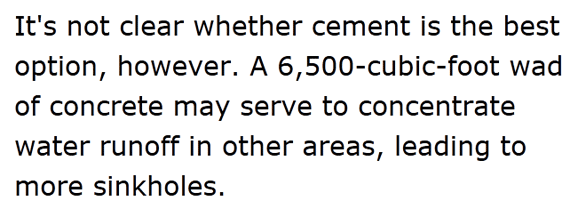
The only way I see how they could get 6,500 cubic feet as an answer using their reported dimensions of 65 feet in diameter and 100 feet in depth is to multiply 65 by 100. Clearly that is not correct. This is a great opportunity for students to double check the validity of their answer and defend their reasoning.
Update: I actually contacted the article’s author and he replied “Apparently you picked the wrong article for a math lesson! I apologize. It appears you are correct.” So, it is an example of how even professionals make silly mistakes and how we have to check our work to make sure it is reasonable. Using low, high, and best guesses is helpful for this.
The next challenge is “How much will it cost to fill the sinkhole in?”. Obviously a lot of assumptions need to be made. Slate reported that in 2007 Guatemala filled a larger sinkhole (about 330 feet deep) with concrete. So, using that information:
A cubic foot of concrete currently costs about $4. $4 * 342,119.45 costs about $1,368,477.80. That obviously does not include labor, material transportation, or really anything besides the concrete itself. The price of concrete also varies, so it would be reasonable for the total cost to be somewhere between $1 and $2 million. In the Slate example, the previous sinkhole cost $2.7 million so this seems like a reasonable estimate.
- Wide view of the sinkhole and the city
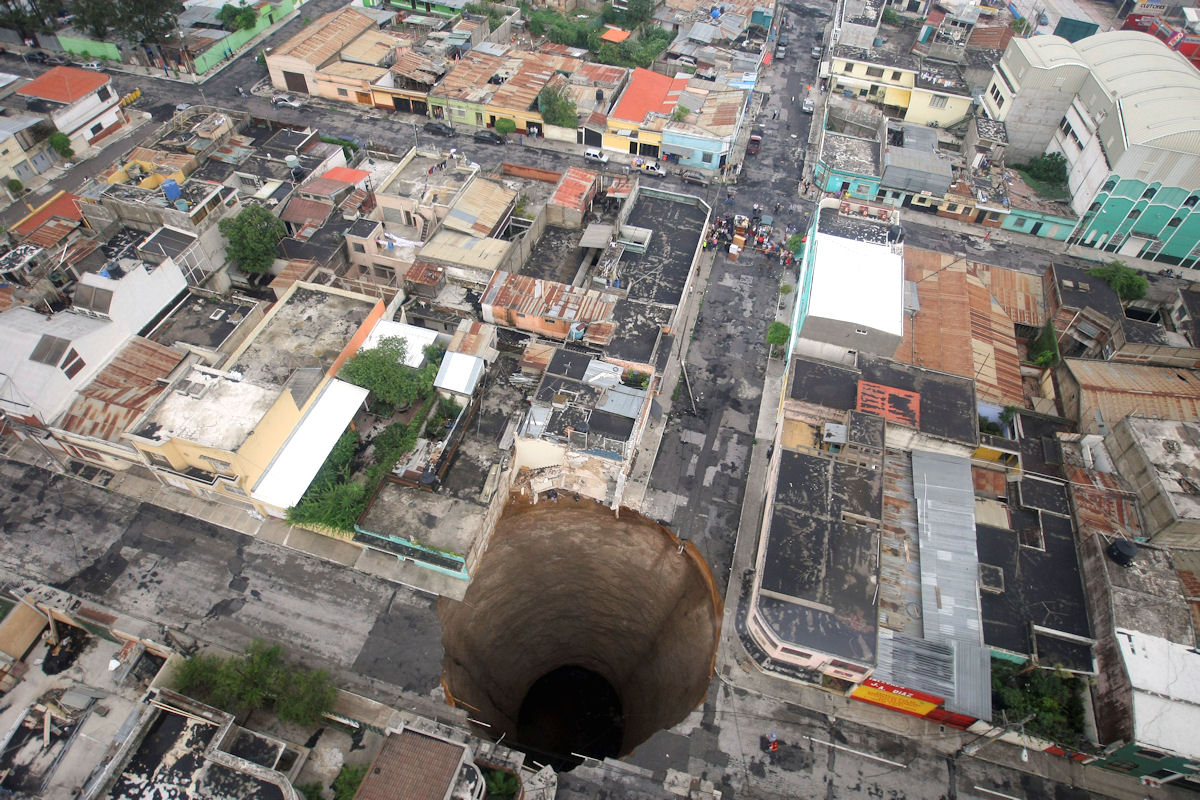
- View of the sinkhole with the helicopter’s shadow in the hole.
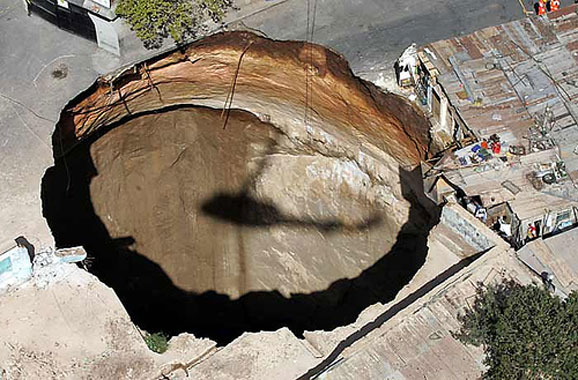
- Close view of the sinkhole
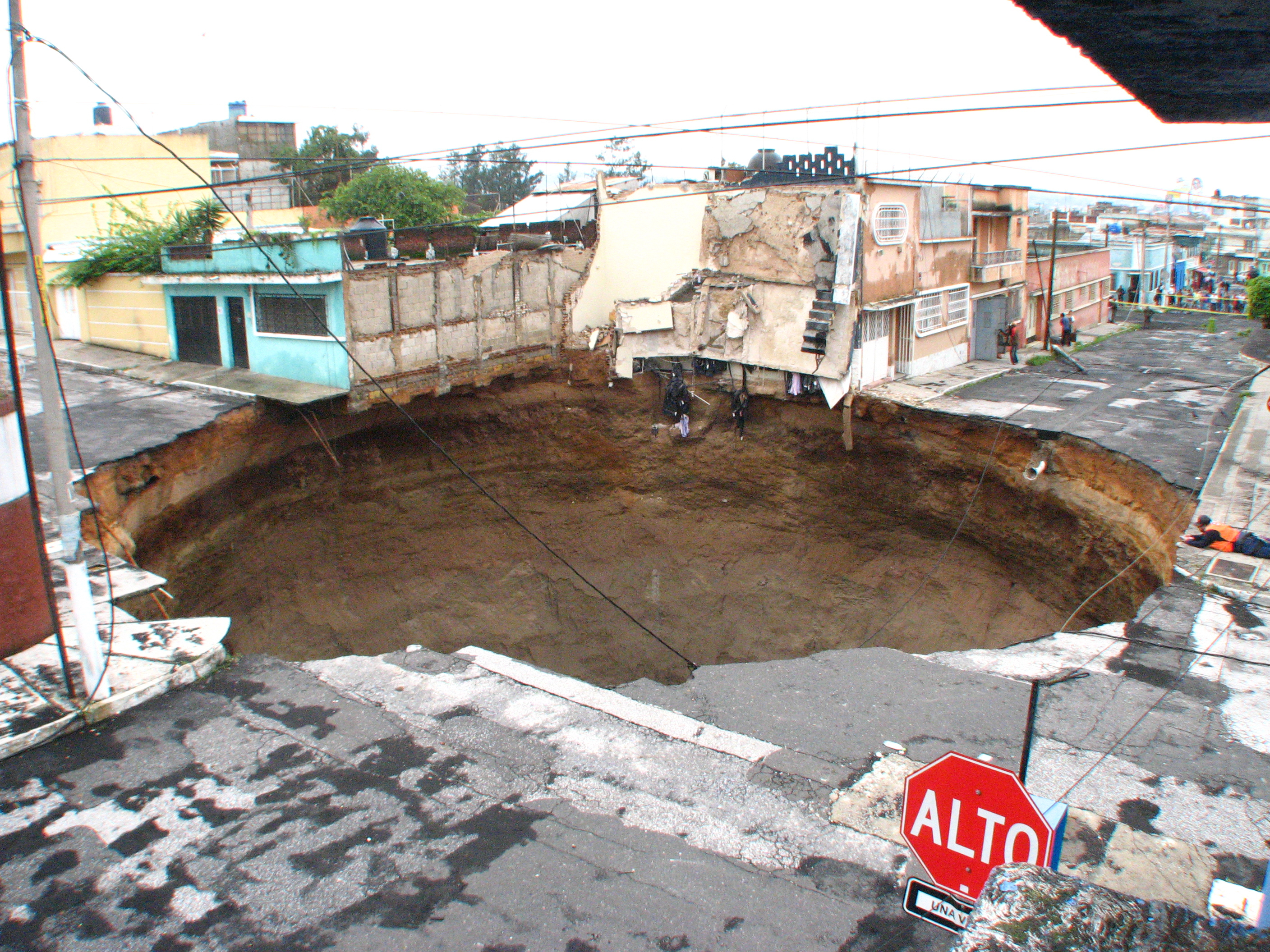
- Close view of the sinkhole
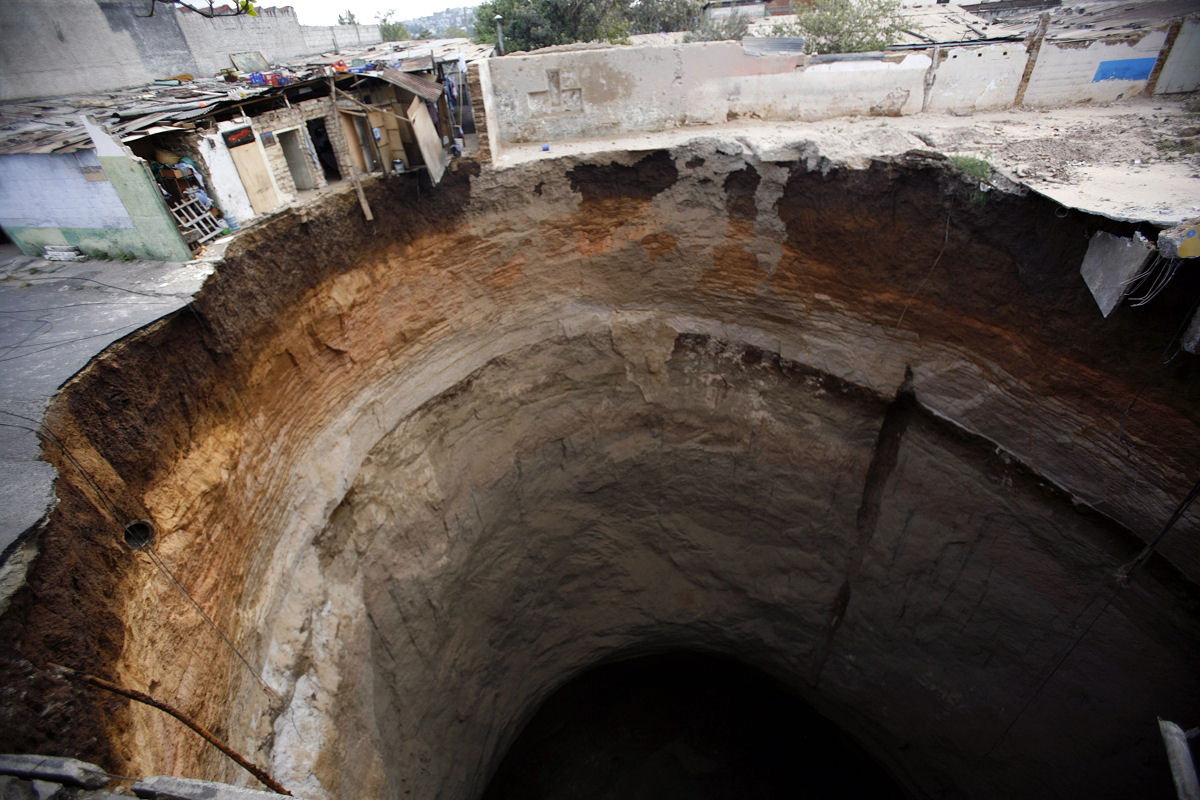
- Close view of the sinkhole
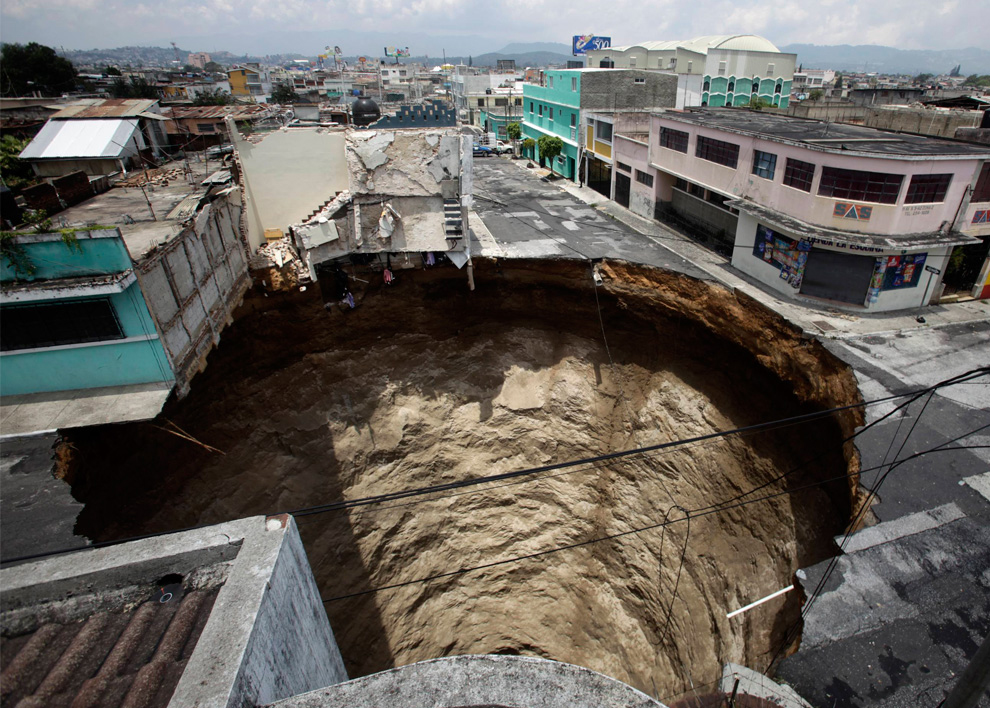
Below are medium and high work samples for the challenge. The only issues I had with the medium work samples were missing or incorrect units.
- Medium
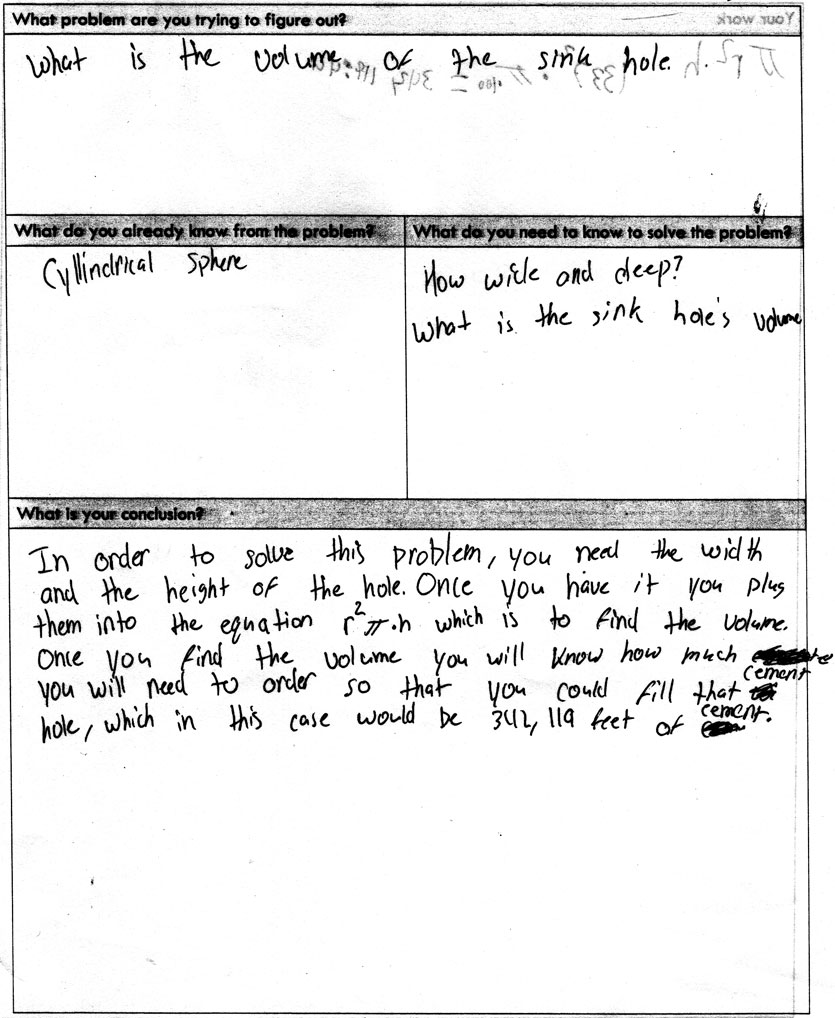
- Medium
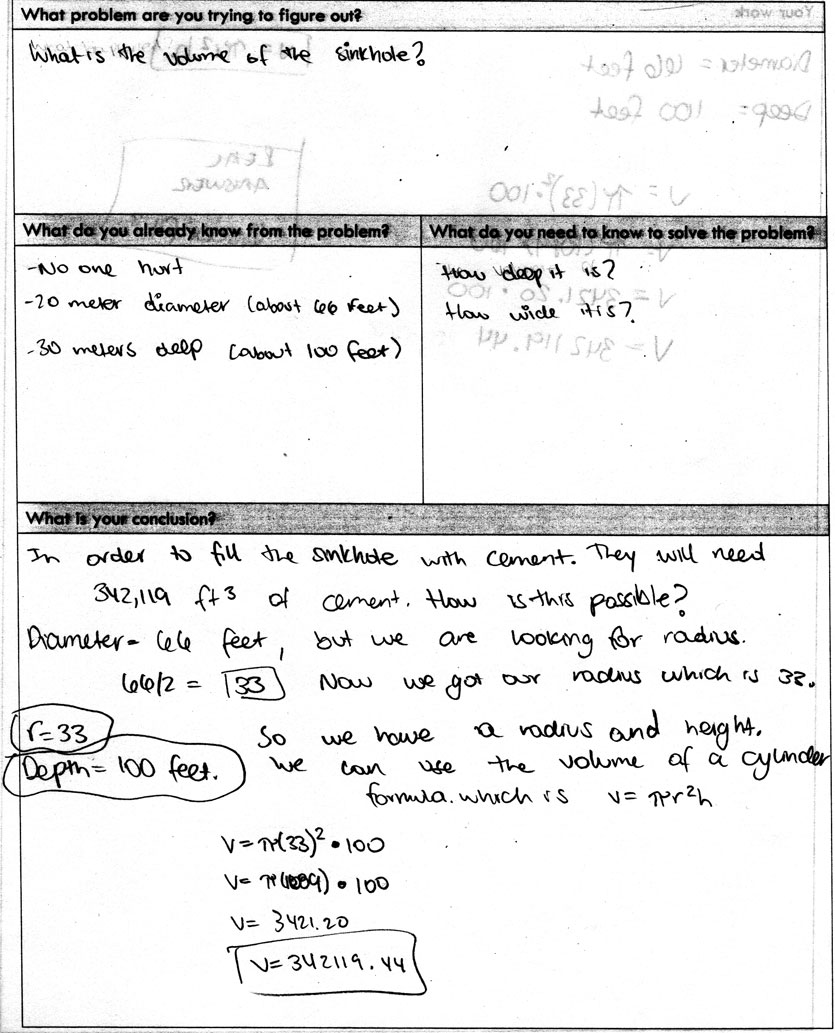
- High
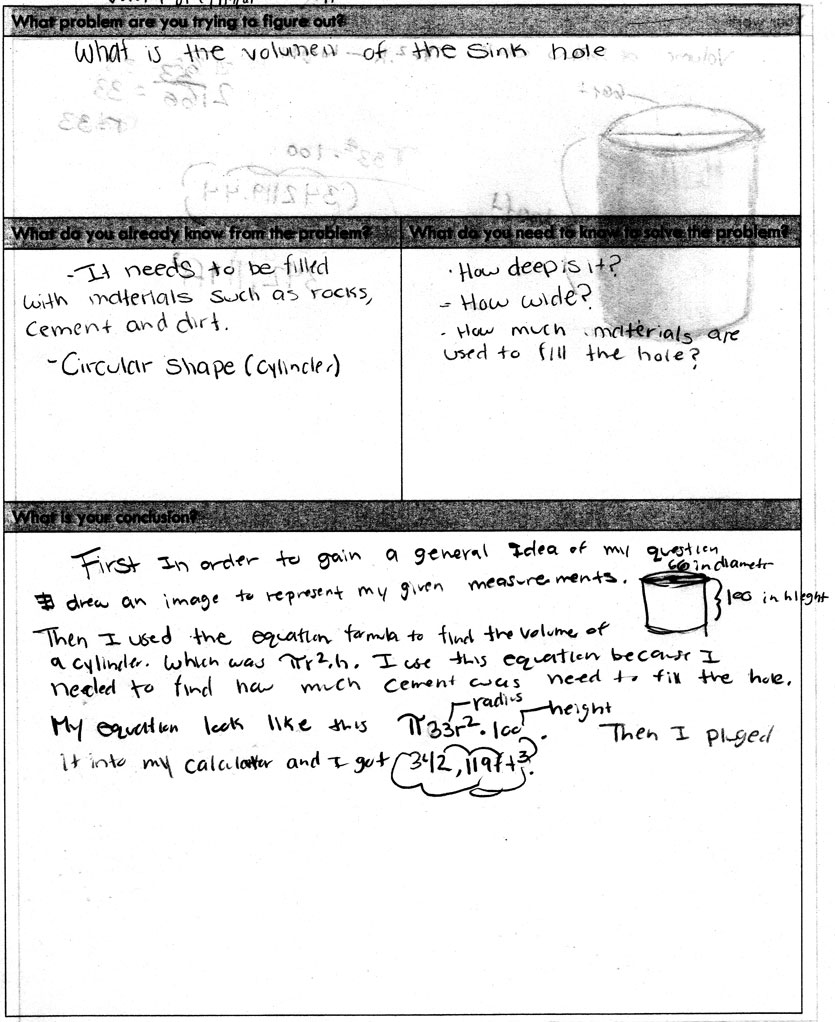
- High
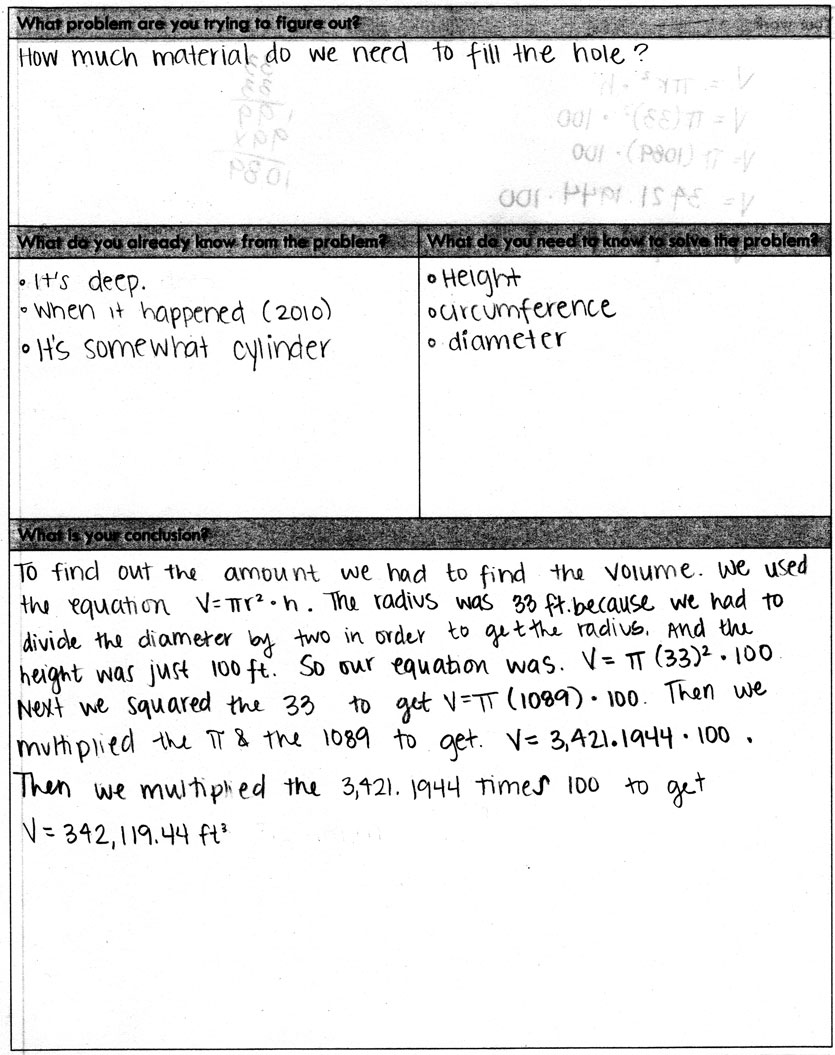
- High
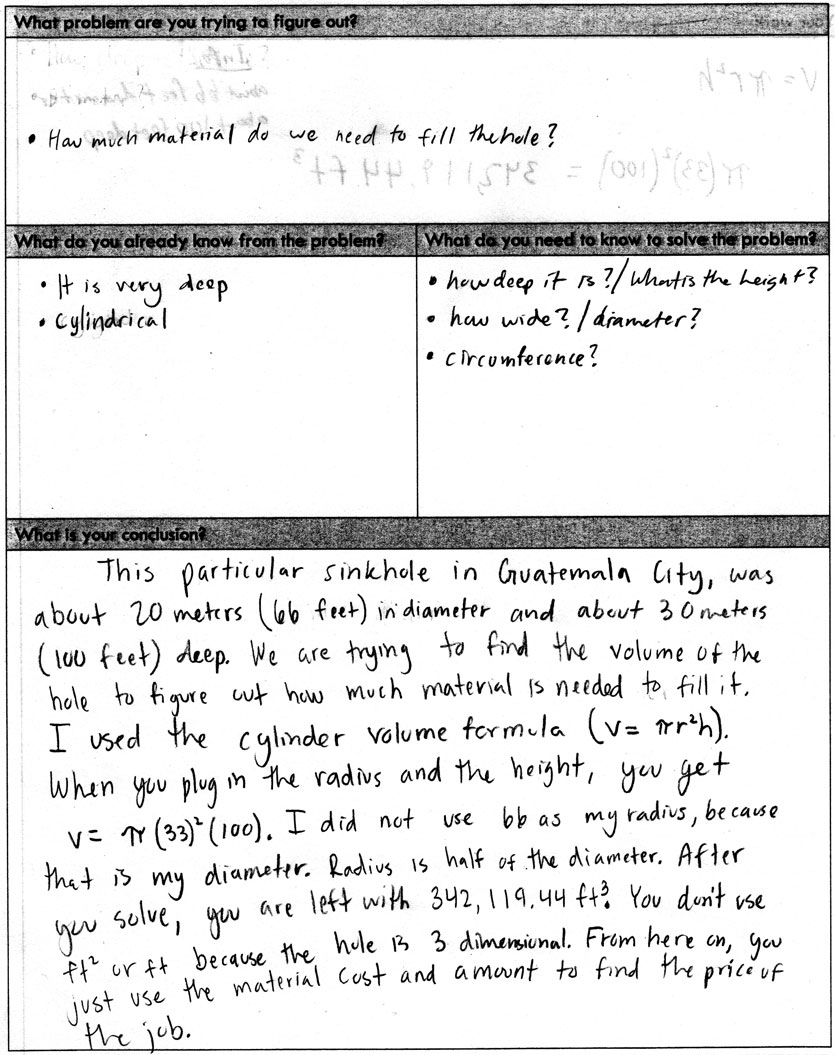
- CCSS 8.G.9 – Know the formulas for the volumes of cones, cylinders, and spheres and use them to solve real-world and mathematical problems.
- CCSS G-GMD.3 – Use volume formulas for cylinders, pyramids, cones, and spheres to solve problems.
- CCSS G-MG.1 – Use geometric shapes, their measures, and their properties to describe objects (e.g., modeling a tree trunk or a human torso as a cylinder).
- 101qs.com
- National Geographic
- Time Magazine
- CNN
- Slate
- Wikipedia
- What is on the other side of the world from Guatemala?
- YouTube
- Location of sinkhole on Google Maps

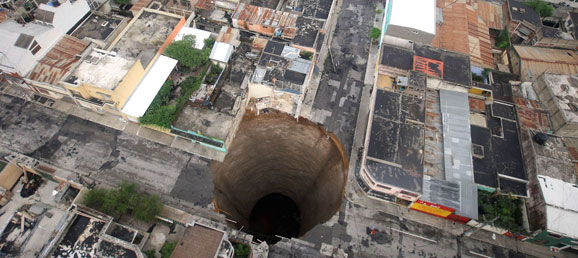

Hello, this is an awesome lesson that I’m going to use with my 7th graders! Where can I find the student response sheet? Thanks!
Hi Jasmine. You can find the latest version of my problem solving framework here on my resources page: http://robertkaplinsky.com/resources/.
Thank you!
Hi, Robert, I loved your presentation in which you discussed this problem and showed your students’ reaction at the NCTM conference in April, and I’d love to show that video to my team. Is it available anywhere?
Unfortunately, I don’t have the ability to share that video due to student permissions. Sorry!
I loved using this problem as a framework to study the volume of cylinders with our 8th grade students. At the end, we extended the problem by looking up information about a sinkhole that happened a few years ago in our own town, which was more of a hemisphere, and comparing their sizes – how many times could we fill up our sinkhole with the material it took to fill up the Guatemalan sink hole?
Nice way to extend the problem! Good job Kayla.
Robert Kaplinsky,
I love this Real-World math problem. I can clearly see my students engaged to this particular lesson.
You share a lesson were the math problem is culturally relevant, provides real-world application and opens the door for higher level of thinking. I can see all students, including English Language Learners apply to this lesson, making connections and engaging them to become better problem solvers.
Thanks Micaela.
I keep using the measurements of 66 ft. diameter and 100 feet deep but using the formula for a cylinder, I am getting 341,946 cubic feet. What am I doing wrong?
What were you expecting to get?
The construction crews measured it (of course… duh) at 55 meters (180.4462 feet) deep. There is a large lateral off-shoot tunnel at the bottom that may extend much deeper, but since the entire area is largely poorly compacted layers of volcanic ash and sand, it was deemed too dangerous to explore much further. Thus it would take 22,864.5011 cubic yards of fresh concrete to fill just the hole (not considering the lateral passage, the dimensions of which are unknown). However, the soils under Guatemala City are porous, so more may be needed to compensate, and well-mixed concrete has a shrinkage of about .05 % as it cures (probably much higher in Guatemala, as they generally add too much water) so lets add another 1% to compensate for a total of 25,150.95121 (call it 25,151 cubic yards or 679,077 cubic feet) of concrete. Oh, yeah… this is Guatemala, where we use the metric system…so 19,229.32 cubic METERS. 🙂